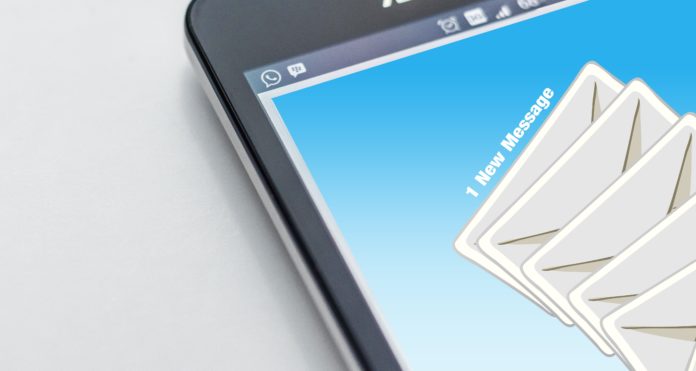
By Amy Corr
When a company says they use video in emails, what does that actually mean? Is there a link to a video inside the message or a large video attachment included with correspondence?
How are automotive dealerships using video in email? Dealer News Today spoke with a series of companies that work with dealerships to help improve their email open rates, click through rates and overall customer/dealership relationship.
Video in email plays a significant role in personalized videos and vehicle walk arounds.
Digital Air Strike has been helping dealerships navigate social media platforms, respond to leads and online reviews, among other tasks, for the past ten years.
The company works with more than 5,000 dealerships and OEMs on monetizing social media and responding to negative reviews online.
At this year’s NADA, the company debuted Video Logix, a tool the company officially released in December that allows dealerships to include a personalized video message in their emails.
Email is an unexpressive form of communication. Stripped of emotion, a simple sentence, meant to be lighthearted, can be interpreted as offensive or insensitive.
Personalized videos remove that possibility for recipients can see the parts manager or sales manager and their visible emotions as they speak to a client as if they are seated in front of them.
“Dealerships are good in-person and and on the phone but not online,” said Alexi Venneri co-founder and CEO of Digital Air Strike.
Following NADA, Digital Air Strike sent video in emails to contacts made at the event. An example email featured the subject line: “Get a baseball signed by Pete Rose!”
The body of the text addressed the recipient by name, mentioned that it was great seeing them at NADA, but if they didn’t manage to meet at the conference, the video brought readers right to the content: a to see how Video Logix works, along with NADA highlights. Attendees who sign up to view a demo by the start of baseball season (March 26) will receive a baseball signed by Pete Rose.
Email recipients have the option to click the still of the video for it to play in a separate window or click a “watch video” hyperlink located above the still.
To date, Video Logix has 300 dealers signed up to use the product.
Dealerships can turn online feedback into video reviews; in addition, consumers can hear from various dealership departments before, during and after a purchase.
“Why shouldn’t the dealership’s general manager send a thank you email when you buy a car?” added Venneri. “It builds trust and loyalty.”
WeDrive Automotive uses multiple avenues to drive interest to a dealership’s website and onto a client’s lot, not its competitors.
“Email has advanced targeting and measurements,” said Eric Mercado, President and Co-Founder of WeDrive Automotive. “It’s more sophisticated than it’s ever been.”
WeDrive offers dealerships the option to add a video gif inside emails. Not traditional video per se, but dealerships can create a custom video and add the gif inside an email.
Recipients can click the gif and be directed to a landing page of dynamic video. The landing page is branded with dealership content and logos, along with videos thanking a customer for their purchase or enticing a customer who requested additional information to come down to the dealership.
Video viewership is measured in real-time, and not only does it drive customers to a dealership’s website, it measures what they do on the site, and allows the company to re-market to them after they interact and purchase from a dealership. WeDrive Automotive can tell that a customer came to the dealership after watching a video.
“Everything has its place,“ concluded Mercado. “CPA (cost per acquisition) for automotive dealerships is low for email. It’s one of the most effective mediums out there, although open rates and CTRs (click-through rates) aren’t as effective as they were.”
Covideo has been using video in email since the company’s launch in 2004 but the way video is used in email has modernized.
One way dealerships can improve email open rates is to use the word video in subject lines; Covideo said it can increase open rates by 19%.
Covideo gives dealerships a license where employees can create custom videos for existing and potential clients along with analytic tools to measure and follow engagement.
For example, say a potential customer inquired about a specific brand and model. A dealership would like to get this person to visit the store, and uses a custom video to make it happen.
It begins with a follow-up email with a subject line like: Follow-up video with Jane on the 2015 Subaru.
Inside the email is a moving gif of a dealership employee waving to the customer. The employee is holding a whiteboard with the person’s name on it.
Click on the gif and users are redirected to a dealership-branded landing page designed by Covideo. A 30-second video, created via camera on the employee’s work computer, will play of the rep speaking directly to the consumer about interest in a car, an update on a repair order or thanking them for buying a vehicle.
After I spoke with Elizabeth Abram, Vice President of Sales and Marketing at Covideo, she sent me my own personalized video to demonstrate how video is used.
“Video gets your foot in the door faster,” said Abram. “We help dealerships focus on where their conversions need the most help.”
Employees across all departments would have a Covideo account where they can view their videos and analytics.
Dealerships can receive a notification when a video is being watched, how often it was watched, even when the viewer drops off. There is a video replay feature and customers can even reply back in video form. Dealerships can capture testimonials by having consumers send a video about their experience.
The service department can show repairs in progress, giving the customer visual updates under the hood. If you want a consumer to fill out a survey, they may be more likely to do so with a personalized video included.
Abram added that the only pushback to video in emails is camera anxiety. People are nervous, or afraid of making a mistake. “If you mess up and keep going it shows you’re human,” she said. “After 5-10 videos you will be a pro.”
Few people send thank you cards these days, but dealerships can create “Happy Birthday” customer videos instead.
Covideo can also be used internally as a way to introduce the company to a new employee or a way to shorten a meeting to an email.
A new way Covideo is using videos in emails is for vehicle walk arounds. Think of it as an unboxing video, but with a car instead. A sales rep can pan the camera underneath a car, under the hood, and inside the vehicle. Here’s an example of a walk around. The only thing missing is the new car smell.












